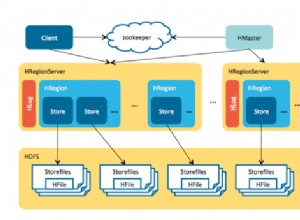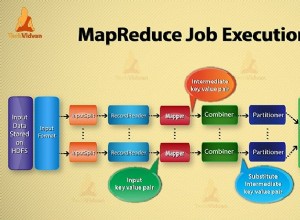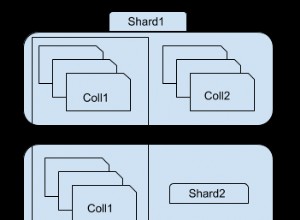Se vuoi puramente out-of-process, allora è piuttosto semplice:qualcosa come il seguente, ma notando che un BookSleeve è progettato per essere condiviso :è completamente thread-safe e funziona come multiplexer:non dovresti crearli / eliminarli per ogni chiamata. Nota anche che in questo contesto presumo che gestirai la serializzazione separatamente, quindi sto semplicemente esponendo un byte[] API:
class MyCache : IDisposable
{
public void Dispose()
{
var tmp = conn;
conn = null;
if (tmp != null)
{
tmp.Close(true);
tmp.Dispose();
}
}
private RedisConnection conn;
private readonly int db;
public MyCache(string configuration = "127.0.0.1:6379", int db = 0)
{
conn = ConnectionUtils.Connect(configuration);
this.db = db;
if (conn == null) throw new ArgumentException("It was not possible to connect to redis", "configuration");
}
public byte[] Get(string key)
{
return conn.Wait(conn.Strings.Get(db, key));
}
public void Set(string key, byte[] value, int timeoutSeconds = 60)
{
conn.Strings.Set(db, key, value, timeoutSeconds);
}
}
Cosa diventa interessante è se si desidera una cache a 2 livelli, ovvero utilizzando la memoria locale e la cache out-of-process, poiché ora è necessaria l'invalidazione della cache. Pub/sub lo rende utile:quanto segue lo mostra. Potrebbe non essere ovvio, ma ciò significherebbe fare molte meno chiamate a redis (puoi usare monitor per vederlo) - poiché la maggior parte delle richieste viene gestita dalla cache locale.
using BookSleeve;
using System;
using System.Runtime.Caching;
using System.Text;
using System.Threading;
class MyCache : IDisposable
{
public void Dispose()
{
var tmp0 = conn;
conn = null;
if (tmp0 != null)
{
tmp0.Close(true);
tmp0.Dispose();
}
var tmp1 = localCache;
localCache = null;
if (tmp1 != null)
tmp1.Dispose();
var tmp2 = sub;
sub = null;
if (tmp2 != null)
{
tmp2.Close(true);
tmp2.Dispose();
}
}
private RedisSubscriberConnection sub;
private RedisConnection conn;
private readonly int db;
private MemoryCache localCache;
private readonly string cacheInvalidationChannel;
public MyCache(string configuration = "127.0.0.1:6379", int db = 0)
{
conn = ConnectionUtils.Connect(configuration);
this.db = db;
localCache = new MemoryCache("local:" + db.ToString());
if (conn == null) throw new ArgumentException("It was not possible to connect to redis", "configuration");
sub = conn.GetOpenSubscriberChannel();
cacheInvalidationChannel = db.ToString() + ":inval"; // note that pub/sub is server-wide; use
// a channel per DB here
sub.Subscribe(cacheInvalidationChannel, Invalidate);
}
private void Invalidate(string channel, byte[] payload)
{
string key = Encoding.UTF8.GetString(payload);
var tmp = localCache;
if (tmp != null) tmp.Remove(key);
}
private static readonly object nix = new object();
public byte[] Get(string key)
{
// try local, noting the "nix" sentinel value
object found = localCache[key];
if (found != null)
{
return found == nix ? null : (byte[])found;
}
// fetch and store locally
byte[] blob = conn.Wait(conn.Strings.Get(db, key));
localCache[key] = blob ?? nix;
return blob;
}
public void Set(string key, byte[] value, int timeoutSeconds = 60, bool broadcastInvalidation = true)
{
localCache[key] = value;
conn.Strings.Set(db, key, value, timeoutSeconds);
if (broadcastInvalidation)
conn.Publish(cacheInvalidationChannel, key);
}
}
static class Program
{
static void ShowResult(MyCache cache0, MyCache cache1, string key, string caption)
{
Console.WriteLine(caption);
byte[] blob0 = cache0.Get(key), blob1 = cache1.Get(key);
Console.WriteLine("{0} vs {1}",
blob0 == null ? "(null)" : Encoding.UTF8.GetString(blob0),
blob1 == null ? "(null)" : Encoding.UTF8.GetString(blob1)
);
}
public static void Main()
{
MyCache cache0 = new MyCache(), cache1 = new MyCache();
string someRandomKey = "key" + new Random().Next().ToString();
ShowResult(cache0, cache1, someRandomKey, "Initially");
cache0.Set(someRandomKey, Encoding.UTF8.GetBytes("hello"));
Thread.Sleep(10); // the pub/sub is fast, but not *instant*
ShowResult(cache0, cache1, someRandomKey, "Write to 0");
cache1.Set(someRandomKey, Encoding.UTF8.GetBytes("world"));
Thread.Sleep(10); // the pub/sub is fast, but not *instant*
ShowResult(cache0, cache1, someRandomKey, "Write to 1");
}
}
Nota che in un'implementazione completa probabilmente vorrai gestire connessioni interrotte occasionali, con una riconnessione leggermente ritardata, ecc.




